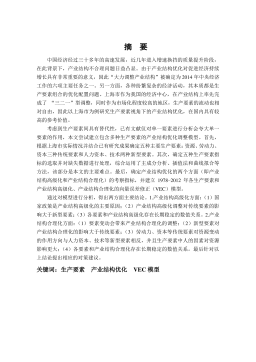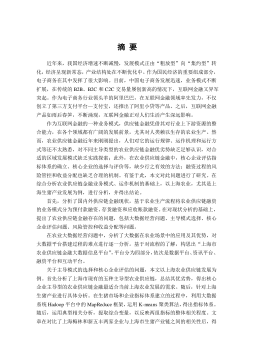CO2常规工质空调热水联合系统的实验研究
CO2/常规工质空调热水联合系统的实验研究摘要由于自然工质CO2作为制冷剂替代具有良好的前景,而跨临界CO2热泵热水器在制热、供热水方面又十分高效,以及常规工质空调器还将继续使用一段时间(至少几十年),本文针对以上现状,设计了一套CO2/常规工质空调热水联合系统,可回收房间空调器夏季制冷排放的冷凝热用于制取生活热水,能实现夏季供冷、冬季供热、全年提供生活热水的功能,提供了五种运行模式:制冷+供热水、制热+供热水、单独制冷、单独制热、单独供热水。本文还设计了一个用于跨临界CO2热泵系统的气体冷却器,这是一个壳管式换热器,采用不锈钢材料,以满足系统对承压的要求。跨临界CO2热泵系统的管路全部用不锈...
相关推荐
-
我国基层财政困难的制度成因分析与对策研究VIP免费

 2024-09-20 43
2024-09-20 43 -
我国煤电产业链纵向交易合约机制研究VIP免费

 2024-09-20 39
2024-09-20 39 -
生产要素视角下的上海市产业结构优化研究VIP免费

 2025-01-09 8
2025-01-09 8 -
我国银行业结构与经济结构关系研究VIP免费

 2025-01-09 17
2025-01-09 17 -
大数据视角下农业供应链金融研究VIP免费

 2025-01-09 12
2025-01-09 12 -
跨国大型综合超市的规划研究VIP免费

 2025-01-09 9
2025-01-09 9 -
跨境电商农产品质量安全问题研究VIP免费

 2025-01-09 9
2025-01-09 9 -
世界市场的虚拟化与我国国际电子商务发展方向研究VIP免费

 2025-01-09 39
2025-01-09 39 -
中国政府对电力行业的价格规制问题研究VIP免费

 2025-01-09 18
2025-01-09 18 -
中小企业信息化系统集成技术研究VIP免费

 2025-01-09 29
2025-01-09 29
相关内容
-

跨国大型综合超市的规划研究
分类:高等教育资料
时间:2025-01-09
标签:无
格式:PDF
价格:15 积分
-

跨境电商农产品质量安全问题研究
分类:高等教育资料
时间:2025-01-09
标签:无
格式:PDF
价格:15 积分
-

世界市场的虚拟化与我国国际电子商务发展方向研究
分类:高等教育资料
时间:2025-01-09
标签:无
格式:PDF
价格:15 积分
-

中国政府对电力行业的价格规制问题研究
分类:高等教育资料
时间:2025-01-09
标签:无
格式:PDF
价格:15 积分
-

中小企业信息化系统集成技术研究
分类:高等教育资料
时间:2025-01-09
标签:无
格式:PDF
价格:15 积分





